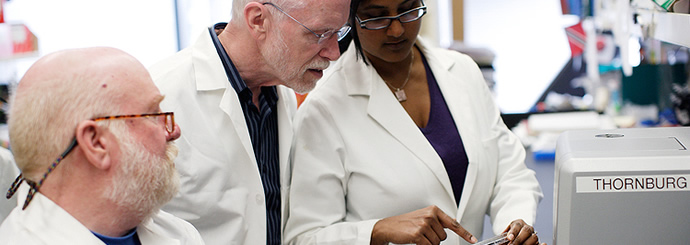For Cardiovascular Researchers
As part of Oregon's only academic medical center, our faculty are researching new treatments for cardiovascular conditions and educating the next generation of health care professionals.

Research centers and programs
- Adult Congenital Heart Disease Research
- Aortic Translational Research
- Arrhythmia Research
- Cardiothoracic Surgery
- Cardiovascular Imaging
- Center for Developmental Health
- Center for Preventive Cardiology
- Center for Radiochemistry Research
- Clinical Trials
- Gene Therapy
- Genomics and Genetics Research
- Vascular Biology
Clinical trials
Our institute is involved in dozens of cardiovascular clinical trials. We're studying the risk factors for heart disease, cutting-edge treatments and prevention techniques, as well as the latest technology used to combat heart failure.
Research education and training
OHSU Knight Cardiovascular Institute provides many opportunities for research education and training.
Locate a researcher
Find a research expert on the OHSU Experts tool
Cardiovascular shared research resources
The OHSU Knight Cardiovascular Institute hosts a number of unique imaging technologies and shared resources to facilitate translational cardiovascular research.